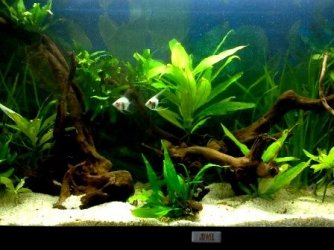I agree that the white sludge is as above, but where is this protien/oil coming from?? For the first time ever I am experiencing this film. Trying to rule out the exact cause but it's not easy as so many things can cause it. So, where did all that oil come from? First, be aware that it only takes a small quantity of oil to make a slick. A drop or two will create an impressive oil slick. Many sources can introduce a tiny amount of oil, including:
•Fish food – Most fish foods have some fat in them.
•Your hands - Everyone has oils in their skin, not to mention that hand lotion you slapped on.
•The air - Cooking oils aerosolize into the air, which is why kitchen surfaces get greasy. If your aquarium is in the next room, the tiny droplets of oil in the air can easily be carried to the tank.
•Equipment - Filters and pumps can have small amounts of oils to lubricate them.
•Fish waste - Fecal material from the fish contains some fat.
•Dead fish - In the unhappy event that a fish dies and is not immediately removed, the decomposition of the body releases fat into the water.
Now that you know where oil comes from you probably wonder why all aquariums don't have oil slicks. Many would, if they didn't have filters and pumps circulating the water. The constant water movement keeps the minute quantities of oil mixed in with the water so they never rise to the top and create an oil slick. For that reason, aquariums that have little water movement are more prone to formation of oil slicks.
The oil itself may not be dangerous, but it reduces the normal gas exchange that occurs at the surface of the water. That in turn will reduce the amount of oxygen in the water, which is not good for your fish. Furthermore, the underlying cause for the oil may be pointing to a larger problem, such as overfeeding, insufficient maintenance, or even faulty equipment.
A quick way of removing the oil slick is to turn off the filters and pumps, and wait a bit for the water to become still. The oil can then be removed by laying a paper towel lightly on the surface for a few moments, then removing it. It may be necessary to repeat the process a couple of times.
To keep the oil slick from coming back, make sure you have good surface agitation, perform regular maintenance (including water changes), and make sure your hands are free of lotions. Using gloves when working inside the aquarium will ensure nothing is transferred from your skin. If the oil slick continues to appear, check your filters and pumps carefully for the presence of oil. Faulty equipment has been known to release oil into the water. Apart from the appearence of this film my tank looks healthy (I think)


 /m1067.photobucket.com/albumview/albums/peterofcarlisle/D84D7583-FB9E-4E9D-A78A-016F82AFA5E8-4379-000003CDB706E07E.jpg.html?o=0&newest=1
/m1067.photobucket.com/albumview/albums/peterofcarlisle/D84D7583-FB9E-4E9D-A78A-016F82AFA5E8-4379-000003CDB706E07E.jpg.html?o=0&newest=1